Structural Engineering: A Comprehensive Overview of Designs and Applications
Introduction
Structural engineering is a vital discipline within the broader field of civil engineering, focusing on the design, construction, and maintenance of physical structures. These structures range from small residential buildings to massive industrial complexes, bridges, dams, and even futuristic skyscrapers. Structural engineers play a crucial role in ensuring that these structures are safe, durable, and capable of withstanding various environmental and operational stresses. This article delves into the diverse range of structures that structural engineers design, highlighting their complexity, innovation, and importance in modern society.
1. Buildings: The Core of Urban Landscapes
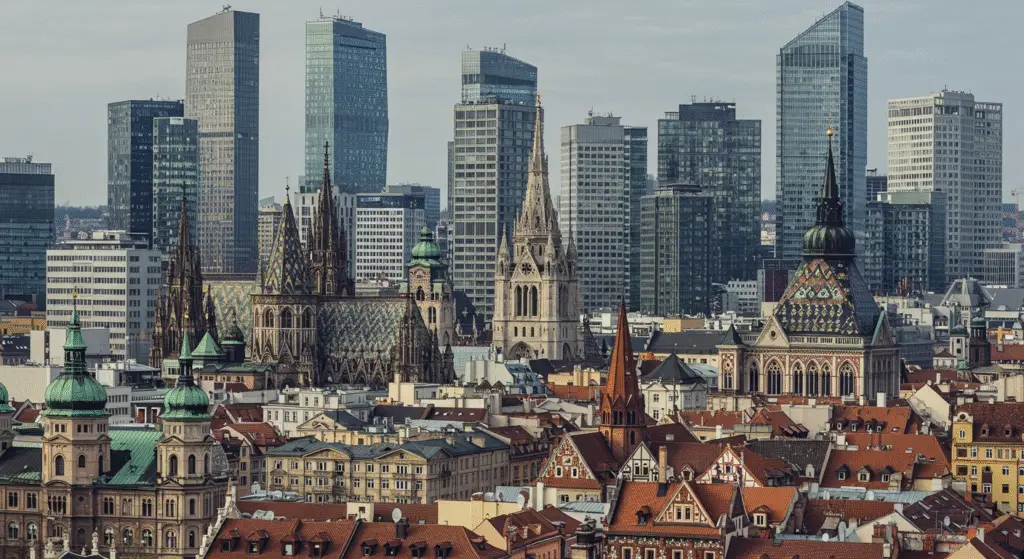
Structural engineers are integral to the design and construction of buildings, which form the backbone of urban environments. Buildings vary greatly in purpose, size, and complexity, and each presents unique challenges for engineers.
- Residential Buildings
Residential buildings include houses, apartments, and condominiums. Structural engineers ensure that these buildings are safe and comfortable for occupants. They design the foundation, walls, floors, and roofs, taking into account factors such as load-bearing capacity, material strength, and environmental conditions like earthquakes and hurricanes.
- Commercial Buildings
Commercial buildings, such as office towers, shopping malls, and hotels, require more complex structural designs due to their larger size and higher occupancy rates. Engineers must consider factors like wind resistance, seismic activity, and the distribution of loads across the structure.
- Industrial Buildings
Industrial buildings, such as factories, warehouses, and power plants, often involve large spans and heavy machinery. Structural engineers must design these buildings to withstand the stresses imposed by heavy loads and operational activities.
- Historic Buildings
The preservation and restoration of historic buildings present unique challenges for structural engineers. They must balance the need to maintain the building’s historical integrity with the requirement to meet modern safety and structural standards.
2. Bridges: Spanning Distances and Connecting Communities
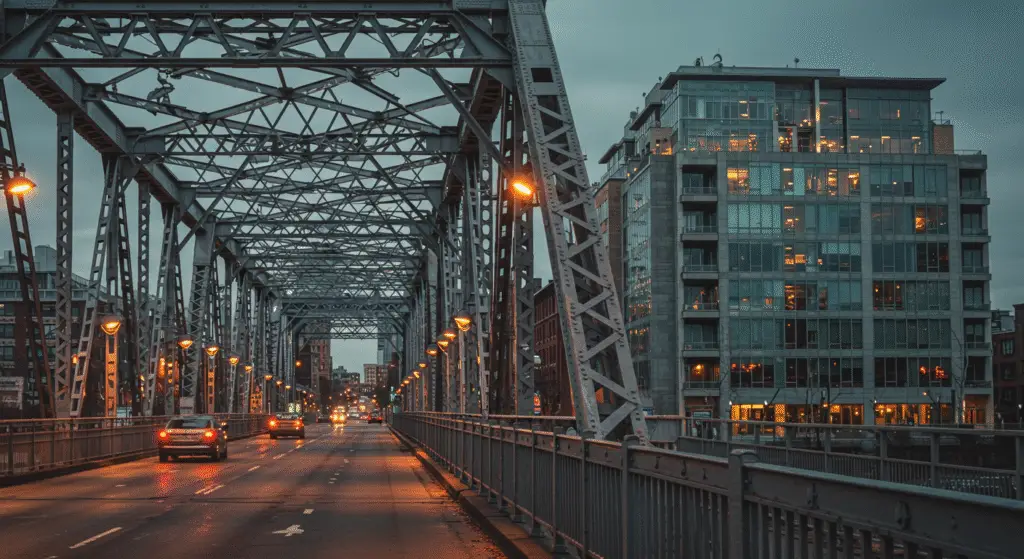
Bridges are critical components of transportation infrastructure, enabling the passage over obstacles like rivers, valleys, and other roads. Structural engineers design bridges to be safe, durable, and aesthetically pleasing, while also considering factors like traffic volume, environmental conditions, and construction costs.
- Beam Bridges
Beam bridges are the simplest type of bridge, consisting of horizontal beams supported by piers at each end. They are commonly used for short spans and are often employed in urban areas due to their simplicity and cost-effectiveness.
- Arch Bridges
Arch bridges use curved structures to span distances. They are known for their aesthetic appeal and have been used for centuries, with examples like the ancient Roman aqueducts. Modern arch bridges often use steel or concrete for added strength and durability.
- Suspension Bridges
Suspension bridges are characterized by their use of cables suspended between towers, with the roadway attached to the cables via suspender cables. This design allows for very long spans and is often used for crossing large bodies of water, such as the Golden Gate Bridge in San Francisco.
- Cable-Stayed Bridges
Cable-stayed bridges use cables directly attached to the towers, rather than suspending them. This design is more versatile than suspension bridges and can be used for a wider range of span lengths. The Millau Viaduct in France is a notable example of a cable-stayed bridge.
3. Dams: Controlling Water Flow and Generating Power
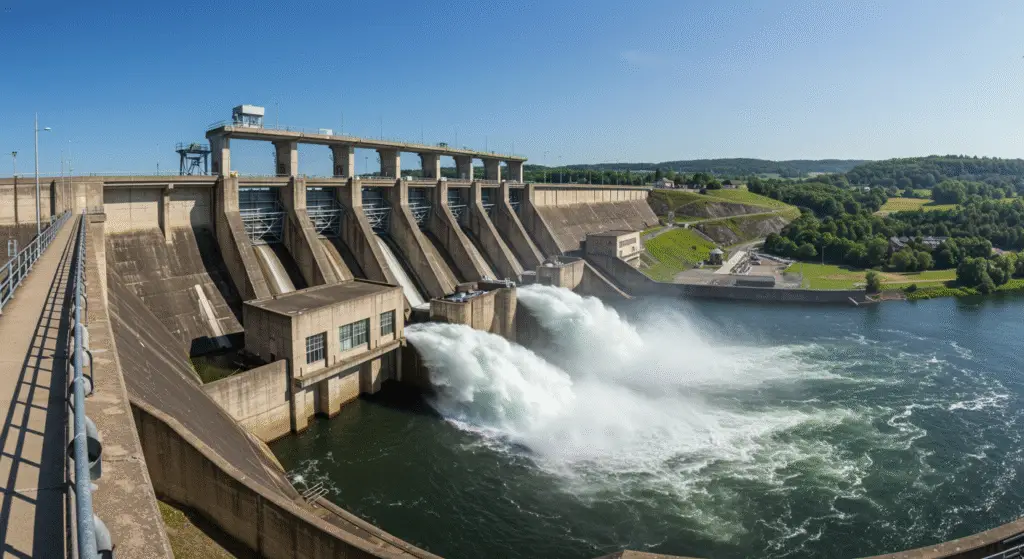
Dams are large barriers constructed across rivers to control water flow, prevent flooding, and generate hydroelectric power. Structural engineers must design dams to withstand immense water pressure while ensuring the safety of the surrounding environment.
- Arch Dams
Arch dams are curved structures that transfer the water pressure to the sides of the valley. They are typically used in narrow, rocky valleys where the natural formation can provide additional support.
- Gravity Dams
Gravity dams rely on their weight to resist the pressure of the water. They are often constructed from concrete or masonry and are suitable for a wide range of sites, including broad valleys.
- Embankment Dams
Embankment dams are constructed from earth or rock materials and are often used in large, broad valleys. They are generally less expensive than concrete dams but require careful design to ensure stability.
- Buttress Dams
Buttress dams are a type of gravity dam that uses a series of supports (buttresses) to provide additional strength. They are often used in areas where the foundation is weak or unstable.
4. Tunnels: Underground Passages for Transportation and Utilities
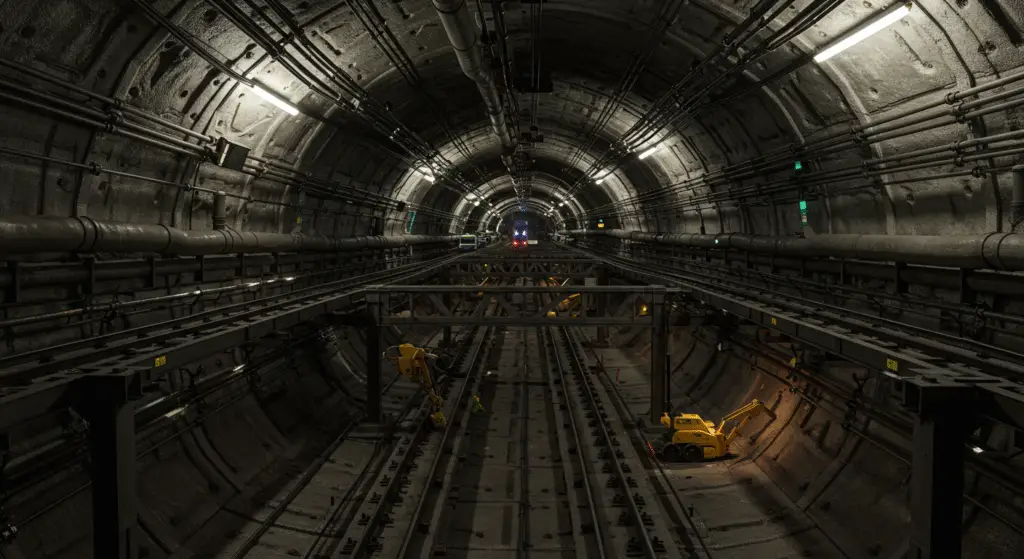
Tunnels are underground passages used for transportation, utilities, and other infrastructure. Structural engineers must design tunnels to be safe and durable, considering factors like soil conditions, water pressure, and the impact of construction on the surrounding environment.
- Highway Tunnels
Highway tunnels allow for the passage of vehicles under obstacles like mountains, rivers, or other roads. They must be designed to handle the weight of traffic and ensure safe conditions for drivers.
- Rail Tunnels
Rail tunnels are used by trains and are often constructed in mountainous or urban areas to reduce travel time and improve transportation efficiency.
- Subway Tunnels
Subway tunnels are a critical part of urban transportation systems, enabling the rapid movement of people within cities. They must be designed to handle the constant flow of trains and passengers while maintaining safety and comfort.
- Utility Tunnels
Utility tunnels house essential infrastructure like water, sewer, and electrical systems. They are often constructed in urban areas to keep these systems out of sight and protect them from damage.
5. Industrial Structures: Supporting Heavy Machinery and Operations
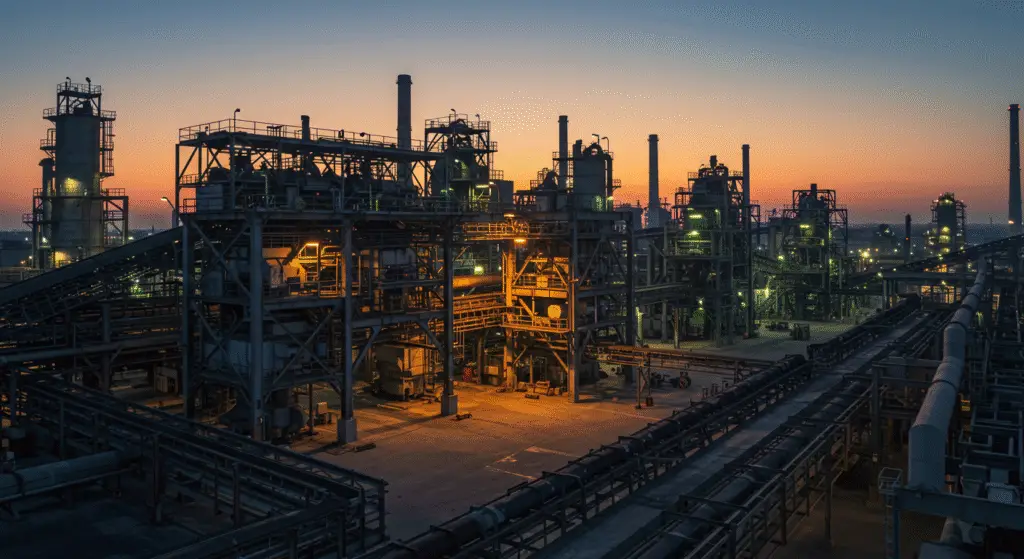
Industrial structures are designed to support heavy machinery and operational activities in sectors like manufacturing, energy production, and logistics. Structural engineers must ensure that these structures are robust, durable, and capable of withstanding the stresses imposed by industrial operations.
- Silos and Grain Elevators
Silos and grain elevators are used for the storage of bulk materials like grains, cement, and coal. They must be designed to handle the weight of the stored material and resist environmental forces like wind and earthquakes.
- Chimneys and Stacks
Industrial chimneys and stacks are used to vent gases and particulate matter from factories, power plants, and other industrial facilities. They must be tall enough to disperse pollutants effectively while withstanding wind and seismic forces.
- Cooling Towers
Cooling towers are used in power plants and industrial processes to dissipate heat from water. They must be designed to handle the thermal expansion and contraction of materials while maintaining structural integrity.
6. Sports Stadiums and Arenas: Designing for Spectator Comfort and Safety

Sports stadiums and arenas are complex structures that must accommodate large numbers of spectators while providing a safe and enjoyable environment. Structural engineers must design these venues to handle the weight of the crowd, resist environmental forces, and meet the specific needs of the sports or events being held.
- Football Stadiums
Football stadiums are designed to host outdoor sports events and must be equipped to handle large crowds, weather conditions, and the specific requirements of the sport.
- Basketball Arenas
Basketball arenas are typically indoor facilities that require precise acoustic and lighting designs to enhance the spectator experience.
- Olympic Stadiums
Olympic stadiums are large, multi-purpose venues that host a variety of events during the Olympic Games. They must be designed to accommodate different sports and events while ensuring safety and comfort for athletes and spectators.
7. Airports and Terminals: Facilitating Global Transportation
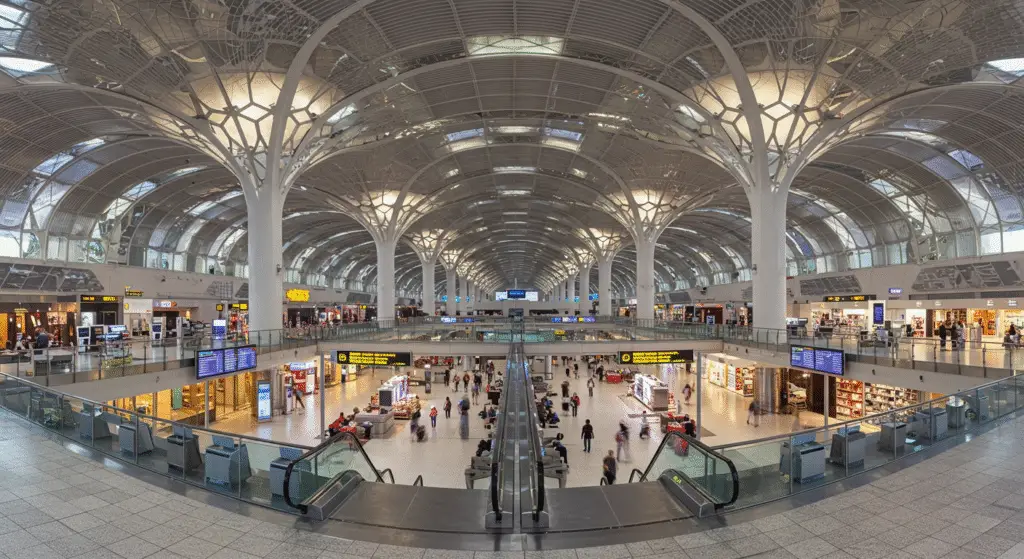
Airports and terminals are critical infrastructure for global transportation, requiring complex structural designs to handle the weight of aircraft, the flow of passengers, and the storage of cargo. Structural engineers must design these facilities to be safe, efficient, and adaptable to future needs.
- Airport Terminals
Airport terminals are the hubs where passengers check in, go through security, and board aircraft. They must be designed to handle large volumes of people while providing a comfortable and efficient travel experience.
- Hangars and Maintenance Facilities
Aircraft hangars and maintenance facilities are used to store and service aircraft. They must be designed to accommodate the size and weight of the aircraft while providing a safe working environment for maintenance crews.
- Runways and Taxiways
Runways and taxiways are the surfaces on which aircraft take off, land, and move around the airport. They must be designed to withstand the weight and impact of aircraft while providing safe and efficient operations.
8. High-Rise Buildings and Skyscrapers: Engineering Marvels in Urban Centers
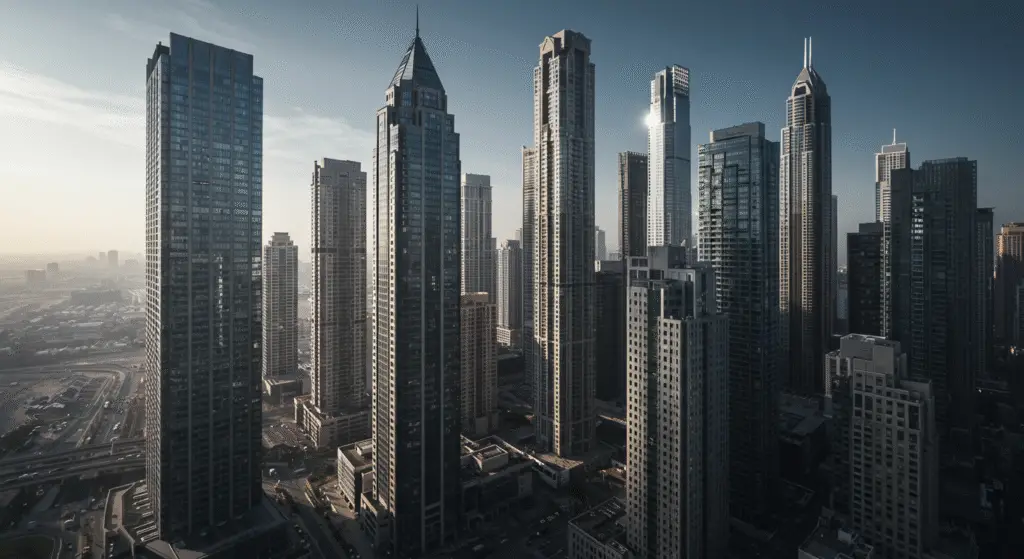
High-rise buildings and skyscrapers are iconic structures that dominate urban skylines. They represent some of the most complex and challenging projects for structural engineers, who must design these buildings to withstand wind, seismic activity, and other environmental forces while providing a safe and comfortable environment for occupants.
- Residential Skyscrapers
Residential skyscrapers, such as apartment buildings and condominiums, provide housing in densely populated urban areas. They must be designed to handle the weight of the building and its occupants while ensuring safety and comfort.
- Commercial Skyscrapers
Commercial skyscrapers, such as office towers, are the heart of many urban business districts. They must be designed to handle the weight of the building and its occupants while providing a functional and efficient workspace.
- Mixed-Use Skyscrapers
Mixed-use skyscrapers combine residential, commercial, and sometimes retail spaces within a single building. They offer a convenient and efficient use of urban space but present additional design challenges due to the varied uses of the building.
9. Seismic Design: Protecting Structures from Earthquake Damage
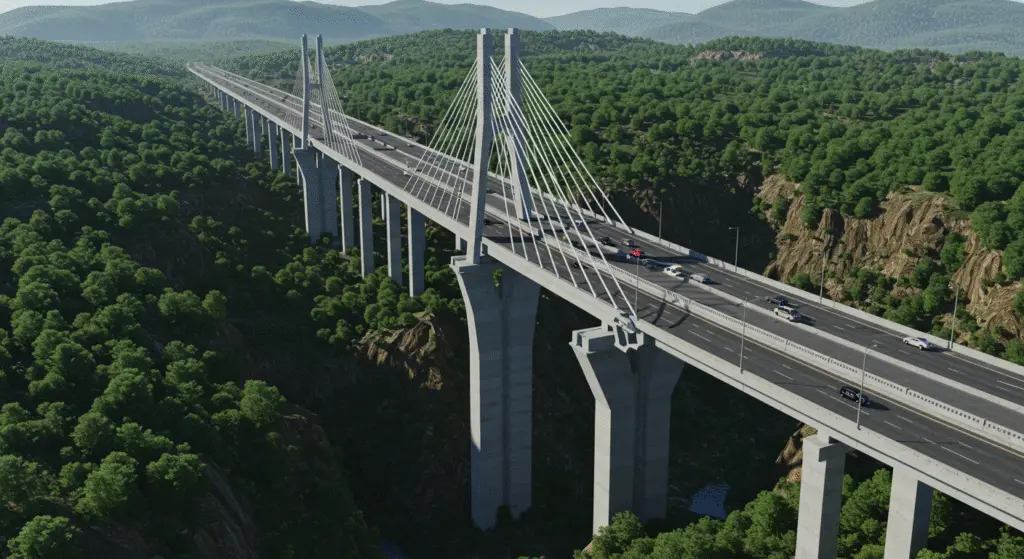
Earthquakes pose a significant threat to structures, particularly in seismically active regions. Structural engineers must design buildings and bridges to resist seismic forces, ensuring the safety of occupants and the integrity of the structure.
- Seismic Retrofitting
Seismic retrofitting involves modifying existing structures to make them more resistant to earthquake damage. This can include the addition of bracing systems, the strengthening of foundations, and the installation of energy-dissipating devices.
- Base Isolation
Base isolation is a technique used to protect structures from earthquake damage by decoupling the superstructure from the ground. This is achieved by installing flexible bearings between the foundation and the superstructure, allowing the structure to move freely during an earthquake.
- Energy Dissipation
Energy dissipation systems are designed to absorb and dissipate the energy generated by seismic activity. These systems can include shock absorbers, viscous dampers, and other energy-absorbing devices.
10. Offshore Structures: Engineering in Marine Environments
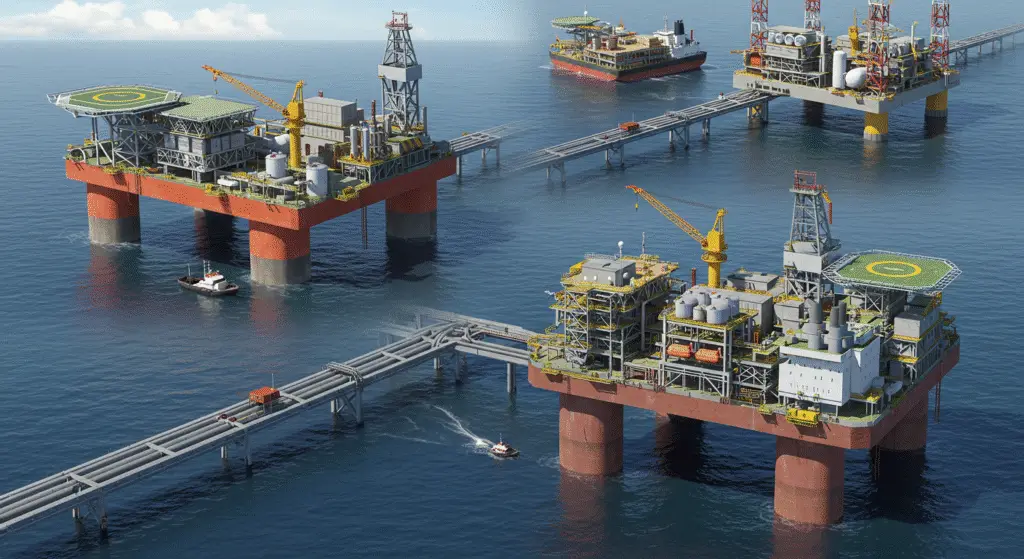
Offshore structures are designed for use in marine environments, where they must withstand the harsh conditions of the sea. These structures include oil platforms, wind farms, and bridges, each presenting unique challenges for structural engineers.
- Oil and Gas Platforms
Oil and gas platforms are used for the extraction of hydrocarbons from beneath the ocean floor. They must be designed to withstand the forces of waves, currents, and seismic activity while providing a safe working environment for personnel.
- Offshore Wind Farms
Offshore wind farms are becoming increasingly important as a source of renewable energy. The turbines and support structures must be designed to resist the corrosive marine environment and the forces of wind and waves.
- Subsea Structures
Subsea structures include pipelines, wellheads, and other equipment used in underwater oil and gas extraction. They must be designed to withstand the extreme pressures and corrosive conditions of the deep ocean.
11. Retrofitting and Renovation: Extending the Life of Existing Structures
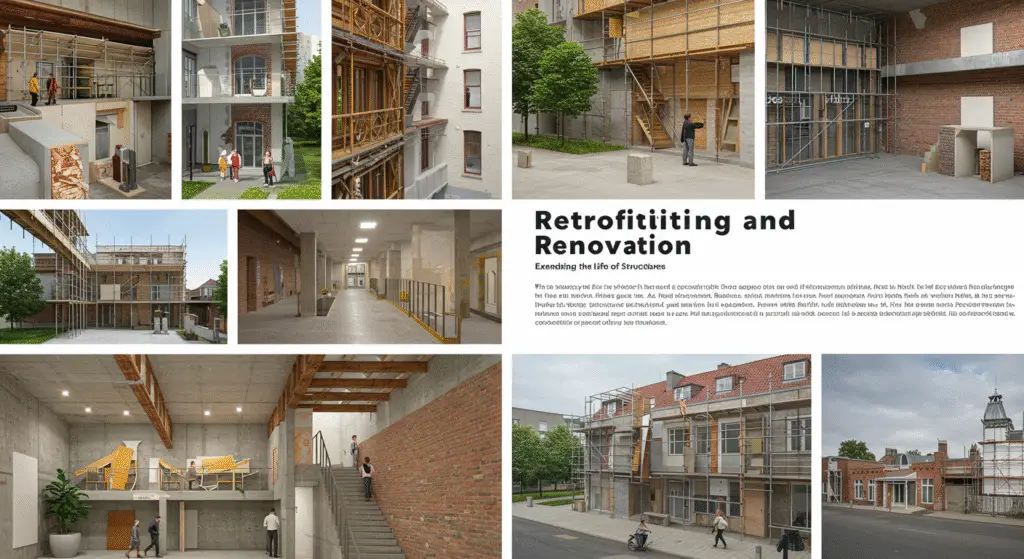
As buildings and bridges age, they may require retrofitting or renovation to maintain their structural integrity and meet current safety standards. Structural engineers must assess the condition of the existing structure, identify any deficiencies, and design appropriate repairs or upgrades.
- Historic Preservation
The preservation of historic buildings requires a delicate balance between maintaining the structure’s historical integrity and ensuring its safety and functionality. Structural engineers must use specialized techniques and materials to restore these buildings while respecting their historical significance.
- Seismic Upgrades
In seismically active regions, older buildings may require seismic upgrades to protect against earthquake damage. This can involve the addition of bracing systems, the strengthening of foundations, and other structural modifications.
- Material Rehabilitation
Over time, building materials can deteriorate due to environmental factors like weathering, corrosion, and pollution. Structural engineers must design rehabilitation strategies to repair or replace damaged materials, ensuring the long-term durability of the structure.
12. Futuristic and Innovative Designs: Pushing the Boundaries of Structural Engineering
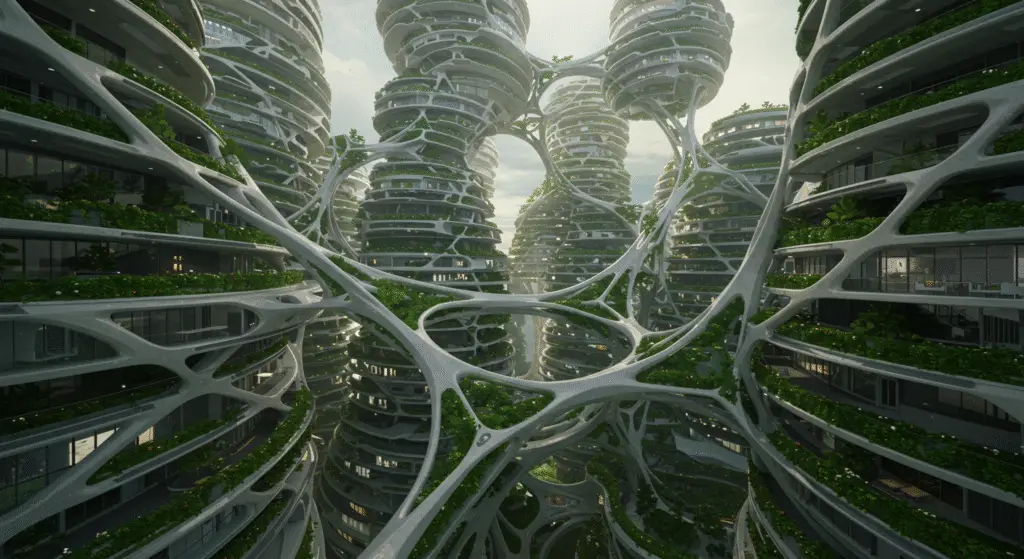
Structural engineering is not just about functionality; it is also about innovation and pushing the boundaries of what is possible. Engineers are constantly seeking new ways to design structures that are more efficient, sustainable, and aesthetically pleasing.
- Sustainable Design
Sustainable design focuses on creating structures that minimize environmental impact while maintaining functionality and efficiency. This can involve the use of recycled materials, energy-efficient systems, and designs that maximize natural light and ventilation.
- Biomimetic Design
Biomimetic design involves drawing inspiration from nature to develop innovative solutions to engineering challenges. For example, the shape of bird wings has influenced the design of certain bridges and buildings.
- Modular Construction
Modular construction involves the use of prefabricated components that can be assembled on-site to form a complete structure. This approach can reduce construction time and costs while improving quality and consistency.
- 3D Printing
3D printing is an emerging technology that is beginning to make its mark on structural engineering. It allows for the creation of complex shapes and structures that would be difficult or impossible to achieve with traditional construction methods.
13. Famous Structural Engineering Marvels: Case Studies

Throughout history, structural engineers have pushed the boundaries of what is possible, creating marvels that have stood the test of time. These structures are not only feats of engineering but also symbols of human ingenuity and creativity.
- The Colosseum
The Colosseum in Rome is one of the greatest engineering marvels of the ancient world. Its design, which includes a complex system of arches and vaults, has influenced the construction of stadiums and arenas for centuries.
- The Eiffel Tower
The Eiffel Tower in Paris is an iconic example of iron lattice construction. Built for the 1889 World’s Fair, it was the tallest structure in the world at the time and remains one of the most recognizable landmarks in the world.
- The Golden Gate Bridge
The Golden Gate Bridge in San Francisco is a masterpiece of suspension bridge design. Its striking orange color and Art Deco styling have made it a symbol of the city and one of the most photographed bridges in the world.
- The Burj Khalifa
The Burj Khalifa in Dubai is the tallest building in the world, standing at over 828 meters. Its design incorporates a range of innovative structural solutions to support its massive height and withstand extreme winds and seismic activity.
14. The Role of Structural Engineers in Disaster-Resistant Construction
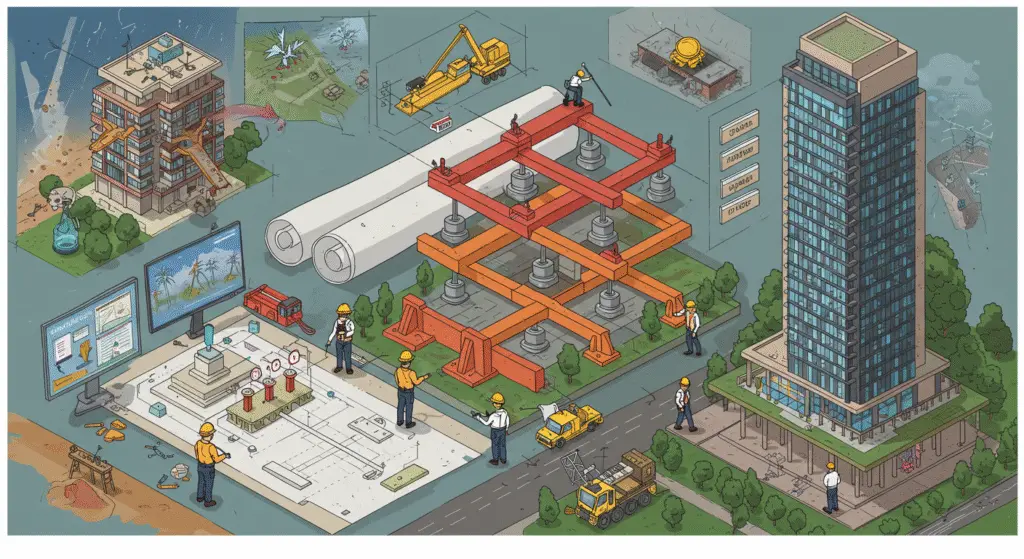
Structural engineers play a critical role in designing buildings and bridges that can resist the forces of natural disasters like earthquakes, hurricanes, and floods. By understanding the behavior of structures under different loads and stresses, engineers can create designs that protect people and property from disaster.
- Earthquake-Resistant Design
Earthquake-resistant design involves creating structures that can flex and absorb the energy released during an earthquake. This can include the use of base isolation, energy-dissipating devices, and other advanced structural systems.
- Wind-Resistant Design
Wind-resistant design is crucial for tall buildings and bridges, which must withstand the forces generated by high winds. Engineers use wind tunnel testing and computer simulations to optimize the shape and structure of these buildings to reduce wind loads.
- Flood-Resistant Design
Flood-resistant design involves creating structures that can withstand the forces of water and prevent water ingress. This can include the use of waterproof materials, elevated foundations, and other protective measures.
15. The Future of Structural Engineering: Emerging Trends and Technologies
The field of structural engineering is constantly evolving, with new technologies and techniques being developed to meet the challenges of the 21st century. As we look to the future, there are several emerging trends and technologies that are likely to shape the discipline.
- Building Information Modeling (BIM)
Building Information Modeling (BIM) is a digital tool that allows engineers and architects to create detailed 3D models of buildings and other structures. BIM can improve collaboration, reduce errors, and enhance the overall design process.
- Artificial Intelligence (AI)
Artificial intelligence is beginning to play a role in structural engineering, with applications in design optimization, materials science, and predictive maintenance. AI can help engineers analyze complex data sets, identify potential problems, and develop more efficient solutions.
- Composite Materials
Composite materials, which combine two or more different materials to achieve superior properties, are becoming increasingly popular in structural engineering. These materials offer advantages like high strength-to-weight ratios, corrosion resistance, and the ability to be molded into complex shapes.
- Sustainable and Green Building
Sustainable and green building practices are becoming more important as society places a greater emphasis on environmental protection. Structural engineers are playing a key role in the development of green buildings by designing structures that use less energy, reduce waste, and incorporate recycled materials.
16. The Impact of Structural Engineering on Society
Structural engineering has a profound impact on society, shaping the built environment and influencing the way people live, work, and interact. From the homes we live in to the bridges we cross, the structures designed by engineers are an integral part of our daily lives.
- Economic Development
Structural engineering plays a crucial role in economic development by providing the infrastructure needed to support businesses, industries, and transportation systems. Well-designed structures can attract investment, create jobs, and stimulate economic growth.
- Public Safety
One of the most important roles of structural engineers is to ensure the safety of the public. By designing buildings and bridges that can withstand various stresses and loads, engineers help protect people from harm and prevent loss of life.
- Environmental Stewardship
Structural engineers have a responsibility to protect the environment by designing structures that minimize their impact on the planet. This can involve the use of sustainable materials, energy-efficient designs, and construction methods that reduce waste and pollution.
- Cultural Significance
Structures designed by engineers can also have cultural significance, serving as landmarks and symbols of a society’s values and aspirations. These structures can inspire pride, foster a sense of community, and leave a lasting legacy for future generations.
17. Challenges Facing Structural Engineers
Structural engineers face a range of challenges as they work to design and build safe, efficient, and aesthetically pleasing structures. These challenges can vary depending on the specific project, but some common issues include:
- Complexity of Modern Structures
Modern structures are often more complex and sophisticated than their predecessors, with intricate designs and advanced materials. This complexity can make it more difficult to ensure the structural integrity and safety of the building.
- Environmental Factors
Structures must be designed to withstand a range of environmental factors, including earthquakes, hurricanes, floods, and extreme temperatures. Engineers must carefully consider these factors when selecting materials and designing the structure.
- Cost and Budget Constraints
Structural engineering projects often have tight budgets and strict cost constraints. Engineers must balance the need for safety and durability with the need to keep costs under control.
- Regulatory Requirements
Structural engineers must comply with a range of regulatory requirements and building codes, which can vary depending on the location and type of structure. These regulations are in place to ensure public safety, but they can also add complexity and cost to the design process.
18. The Importance of Collaboration in Structural Engineering
Structural engineering is a collaborative discipline that requires the involvement of multiple stakeholders, including architects, contractors, materials scientists, and government agencies. Effective collaboration is essential to ensure that the final product meets the desired specifications and performs as intended.
- Architects and Designers
Architects and designers play a crucial role in the early stages of a project, developing the conceptual design and aesthetic vision. Structural engineers must work closely with architects to ensure that the design is not only visually appealing but also structurally sound.
- Contractors and Builders
Contractors and builders are responsible for bringing the design to life, constructing the structure according to the plans and specifications. Structural engineers must collaborate with contractors to ensure that the construction process goes smoothly and that any issues are addressed promptly.
- Materials Scientists
Materials scientists play a key role in the development of new materials and technologies that can be used in structural engineering. By working together, engineers and materials scientists can create innovative solutions that improve the performance and sustainability of structures.
- Government Agencies
Government agencies are responsible for enforcing building codes and regulatory requirements. Structural engineers must work with these agencies to ensure that their designs comply with all relevant regulations and standards.
19. Conclusion: The Ever-Evolving Field of Structural Engineering
Structural engineering is a dynamic and ever-evolving field that continues to play a vital role in shaping the built environment. From the design of simple buildings to the construction of complex megaprojects, structural engineers are responsible for creating safe, efficient, and aesthetically pleasing structures that meet the needs of society. As new technologies and materials emerge, and as the challenges of the 21st century become more pressing, the field of structural engineering will continue to adapt and innovate, ensuring that the structures of the future are better than ever before.
The examples and case studies discussed in this article illustrate the diversity and complexity of structural engineering designs. Whether it’s a towering skyscraper, a long-span bridge, or a historic building being retrofitted for modern use, each project presents unique challenges and opportunities for innovation. As we look to the future, structural engineers will remain at the forefront of technological advancement, designing structures that are not only functional and safe but also sustainable and inspiring. By continuing to push the boundaries of what is possible, structural engineers will leave a lasting legacy for generations to come.
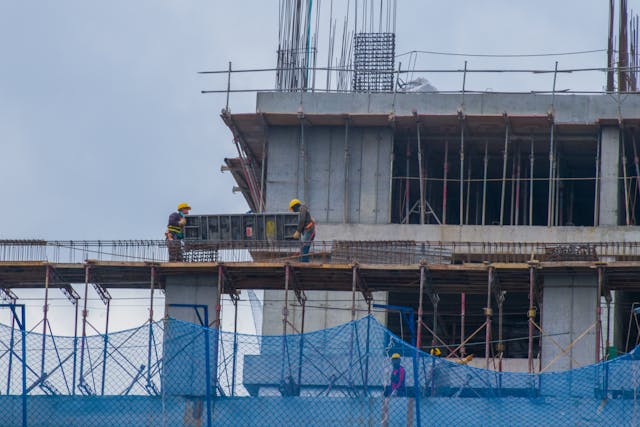
What are some examples of things structural engineers design?
Structural engineers play a crucial role in ensuring that these structures are safe, durable, and capable of withstanding various environmental and operational stresses.
Pingback: What are the different types of structural design? – worldcivilsociety.com
Pingback: The Difference Between a Civil Engineer and a Structural Engineer – worldcivilsociety.com